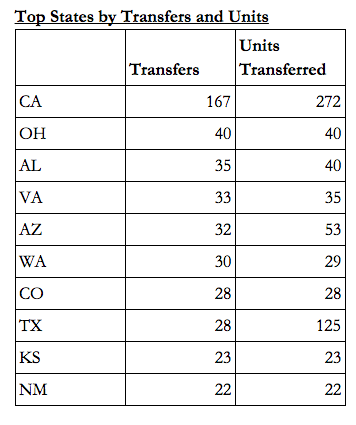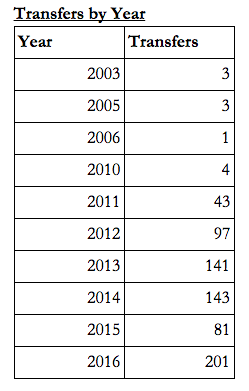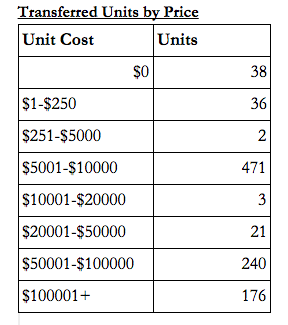[gview file=”http://dronecenter.bard.edu/files/2016/07/LEO-Robots-CSD-7-16-1.pdf”]
Background
Robots are an increasingly common sight in U.S. police departments. These unmanned ground vehicles are used for roles that are deemed too hazardous for law enforcement officers, such as inspecting and disarming explosive ordnance.
The influx of robots into civilian law enforcement agencies follows the widespread integration of unmanned vehicles into the U.S. military, where they have played an important role—particularly in explosive ordnance disposal operations—in Iraq and Afghanistan. During the invasion of Afghanistan, for example, the U.S. Army used an iRobot 310 Small Unmanned Ground Vehicle to search mountain caves for members of al-Qaeda. During the war in Iraq, the Army purchased thousands of robots for use by bomb disposal teams.
As these wars have wound down, the Pentagon has transferred a growing number of these robots to U.S. law enforcement agencies. These exchanges take place under what’s known as the 1033 Program, a Defense Logistics Agency Disposition Services (DLA) initiative to reutilize, transfer, donate, or sell excess military equipment to civil agencies. The 1033 Program covers the transfer of a wide variety of usable property items each year, including many robots. While most of the robots that are acquired by police are intended primarily for bomb disposal, they may also be utilized for other missions such as reconnaissance, entering a building ahead of a squad, and other uses.
Besides the 1033 Program, law enforcement agencies have also acquired robots using federal funds from the Department of Justice or Department of Homeland Security. Most of these funds are directed towards federal agencies such as the Federal Bureau of Investigation (FBI), Bureau of Alcohol, Tobacco, Firearms, and Explosives (ATF), or the Customs and Border Protection agency (CBP).
We have analyzed public 1033 transfer data as well as public contract announcements in order to identify robots currently in use by domestic law enforcement agencies. This is only a partial accounting based on publicly available source materials, and should not be viewed as a comprehensive list of every robot currently in service in the U.S, nor does it reflect the total amount that has been spent on this technology by police. The data lists do not include, for example, robot procurement carried out by individual offices without federal assistance.
[googlemaps https://www.google.com/maps/d/embed?mid=1j2LkNTQ67ULzGHIjdCgMzmsgTIM&w=640&h=480]
Findings: 1033 Program
Within the 1033 public records, which are current up to May 2016, we have identified at least 717 transfers of unmanned systems to 280 law enforcement agencies across the country. These transfers included 987 items (in numerous cases, a single transfer included more than one robot). These agencies included local, state, and federal entities; 248 local agencies received 597 items, 13 state agencies received 31 items, and 19 federal agencies received 359 items.

FBI San Francisco is the single agency that received the most transfers, followed by FBI Los Angeles and the Covina Police Department in California. FBI Dallas received the most units: 99 in total.

Agencies in 43 states received transfers. California received the most transfers, a total of 167, followed by Ohio, Alabama, and Virginia.


These transfers have been occurring at an increasing rate since the program began in 2003. There were 11 transfers in the first seven years of the program to 2010. In 2011 there were 43 transfers, in 2014 there were 143. There have been 201 transfers so far in 2016.

The total initial value of all the robots acquired by law enforcement through the 1033 program is $55,232,278. A variety of systems have been transferred, ranging from small cheap systems to large expensive units. Just under half of all acquired systems, 471 out of 987, initially cost between five and ten thousand dollars. Four hundred and twenty-three units cost $50,000 or more.
*Note: the acquisition cost represents the value of the item when it was acquired by the DoD. The value of the item at time of transfer might be substantially lower than stated in the data.

Federal Contracts and Grants
USAspending.gov, the online database that details federal spending and assistance, includes at least 173 contracts and grants totalling $8.85 million for unmanned ground vehicles for law enforcement. These contracts and grants were issued between 2007 and 2016 by the Department of Justice and the Department of Homeland Security. The majority of these funds—$6.25 million—were allocated for federal agencies such as the FBI. Of the 173 transactions, city and state law enforcement jurisdictions received 25 grants totalling $2.63 million to purchase or upgrade robots. In 2015, there were 42 contracts and grants awarded, more than any previous year.
While it cannot be confirmed that this data presents a full accounting of contracts and grants for law enforcement robots, it does offer insight into the distribution of funds. For example, nine of the top ten biggest contracts for robots awarded by the DoJ went to either the FBI or ATF. The city of Billings, Montana received a $151,000 DHS Federal Emergency Management Agency grant to re-organize its teams of bomb squads and to purchase an additional robot.
Northrop Grumman Remotec, Inc., the maker of the ANDROS robots, was the single largest awardee of DHS and DoJ contracts, receiving $2.43 million, followed by ReconRobotics with $900,514. ReconRobotics, a Minnesota-based company, makes the Throwbot, a reconnaissance robot popular among law enforcement and military personnel.
1033 Data
[gview file=”http://dronecenter.bard.edu/files/2016/07/LEO-Data-Web-Version-Sheet1.pdf”]
Correction: An earlier version of this report incorrectly stated that law enforcement agencies paid a discounted rate to acquire these systems. Law enforcement agencies do not purchase items from the DLA.
